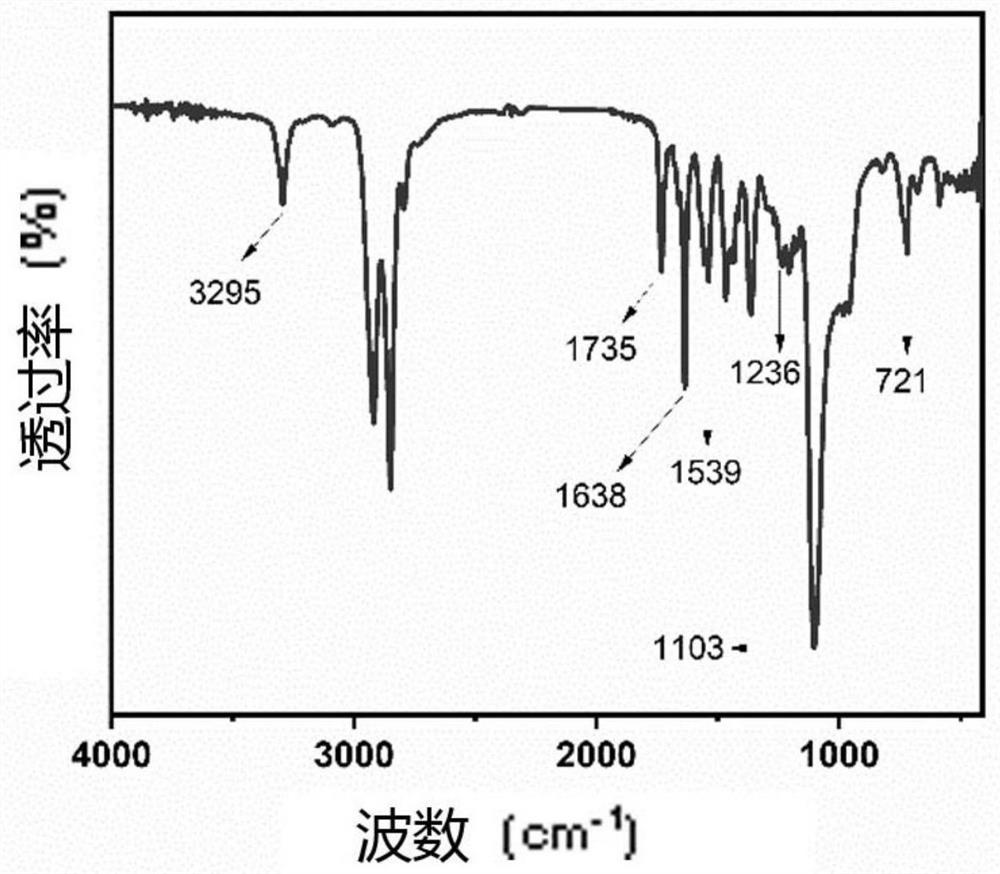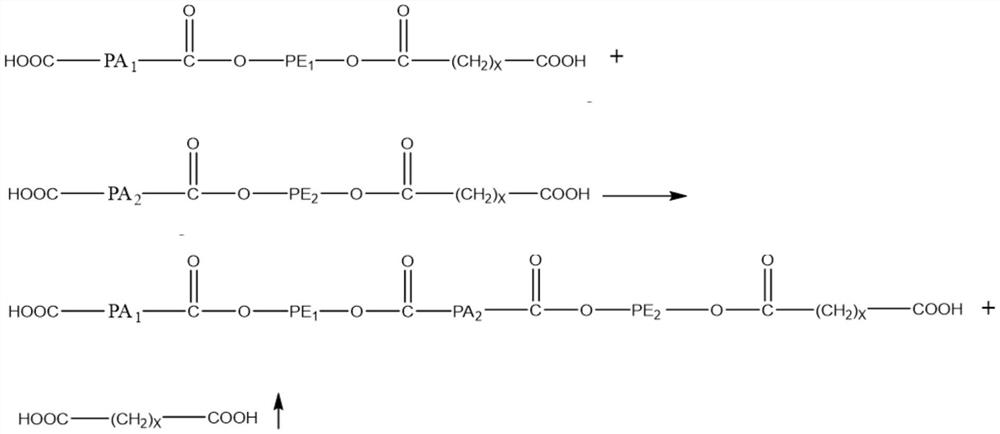Preparation method of long-carbon-chain nylon elastomer and application of dicarboxylic acid
A technology of nylon elastomer and dicarboxylic acid, which is applied in the field of dicarboxylic acid, can solve the problems of harsh synthesis conditions, difficult equimolar ratio, low molecular weight of nylon elastomer, etc., and achieve high molecular weight, mild reaction conditions, The effect of excellent comprehensive performance
- Summary
- Abstract
- Description
- Claims
- Application Information
AI Technical Summary
Problems solved by technology
Method used
Image
Examples
Embodiment 1
[0048] 100 parts by weight of long carbon chain nylon 1210 salt, 10 parts by weight of sebacic acid, 60 parts by weight of deionized water, and 0.22 parts by weight of antioxidant 1098 are placed in the reactor, and the gas in the reactor is replaced with an inert gas, and then the temperature is raised to React at 190°C for 2 hours, and then release the system to normal pressure.
[0049] Add 100 parts by weight of polytetrahydrofuran ether glycol (number average molecular weight: 2000), 1.17 parts by weight of succinic acid and 0.42 parts by weight of tetrabutyl titanate into the reaction kettle; heat up to 200° C. for 3 hours.
[0050] Add 0.42 parts by weight of tetrabutyl titanate to the reaction kettle, heat up to 245°C, and then vacuumize, so that the absolute pressure slowly drops below 100 Pa within 30 minutes, continue the reaction for 4 hours, then stop heating, return the system to normal pressure and release The materials are cooled, pelletized and dried to obtain...
Embodiment 2
[0054] 100 parts by weight of long carbon chain nylon 1210 salt, 10 parts by weight of sebacic acid, 60 parts by weight of deionized water, and 0.22 parts by weight of antioxidant 1098 are placed in the reactor, and the gas in the reactor is replaced with an inert gas, and then the temperature is raised to React at 190°C for 2 hours, and then release the system to normal pressure.
[0055] Add 100 parts by weight of polytetrahydrofuran ether glycol (number average molecular weight: 2000), 3.01 parts by weight of sebacic acid and 0.43 parts by weight of tetrabutyl titanate into the reaction kettle; heat up to 200° C. for 3 hours.
[0056] Add 0.43 parts by weight of tetrabutyl titanate to the reaction kettle, heat up to 245°C, and then vacuumize, so that the absolute pressure slowly drops below 100 Pa within 30 minutes, continue the reaction for 4 hours, then stop heating, return the system to normal pressure and release The materials are cooled, pelletized and dried to obtain ...
Embodiment 3
[0059] 100 parts by weight of long carbon chain nylon 1210 salt, 10 parts by weight of sebacic acid, 60 parts by weight of deionized water, and 0.22 parts by weight of antioxidant 1098 are placed in the reactor, and the gas in the reactor is replaced with an inert gas, and then the temperature is raised to React at 190°C for 2 hours, and then release the system to normal pressure.
[0060] Add 83 parts by weight of polytetrahydrofuran ether glycol (number average molecular weight: 1000), 1.17 parts by weight of succinic acid and 0.40 parts by weight of tetrabutyl titanate into the reaction kettle; heat up to 200° C. for 3 hours.
[0061] Add 0.40 parts by weight of tetrabutyl titanate to the reaction kettle, heat up to 245°C, and then vacuumize, so that the absolute pressure slowly drops below 100 Pa within 30 minutes, continue the reaction for 4 hours, then stop heating, return the system to normal pressure and release The materials are cooled, pelletized and dried to obtain ...
PUM
 Login to view more
Login to view more Abstract
Description
Claims
Application Information
 Login to view more
Login to view more - R&D Engineer
- R&D Manager
- IP Professional
- Industry Leading Data Capabilities
- Powerful AI technology
- Patent DNA Extraction
Browse by: Latest US Patents, China's latest patents, Technical Efficacy Thesaurus, Application Domain, Technology Topic.
© 2024 PatSnap. All rights reserved.Legal|Privacy policy|Modern Slavery Act Transparency Statement|Sitemap



